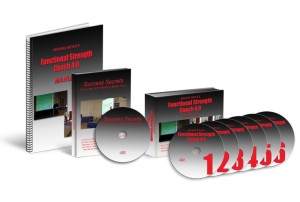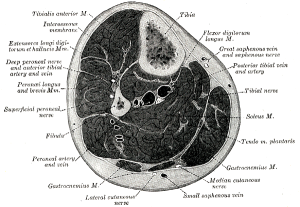In This Episode In this episode of the podcast I continue the interview with Paul Wright. In Part 2, of the interview we discuss: The 4 most successful and easy to implement external marketing strategies How to overcome barriers to implementing these successful strategies 5 of Paul’s business failures and what he learnt from them Why […]
 TSP011: Health Business Success with Paul Wright (Part 2) [ 28:45 ] Play Now | Play in Popup | Download
TSP011: Health Business Success with Paul Wright (Part 2) [ 28:45 ] Play Now | Play in Popup | DownloadIntroduction Sports physiotherapists regularly assess and treat shoulder pathologies. In my clinical practice, shoulders would place in the top 3 most common conditions (along with back and knee presentations). Given the frequency with which we see these problems, there is much interest in the best assessment and rehabilitation techniques for shoulder problems. This article will […]
Introduction Hamstring strains are commonly assessed and treated in the world of sports physiotherapy. They represent the most common injury in a number of sports, including AFL and soccer, accounting for up to 12-16% of injuries (Hawkins et al., 2001; Warren et al., 2010). Dvorak and Astrid (2000) suggested that hamstring injuries occur at an […]
Many of the world’s sports physical therapists and physiotherapists spend their weekends at sporting events around the world. Unfortunately, many of us do not have the support of a huge medical team around us, such as that available to James Sutherland at Wallabies games. Therefore, we are often the most highly trained “medical” staff at any given event, and when it comes to injured athletes the buck stops with us. This means we require knowledge on a variety of conditions that may not be “sports” injuries and many abdominal injuries may fall outside the expertise of a physio.
How regularly do you treat injured athletes with reduced lower limb flexibility? The answer from many of you would likely be all day long! It has been well established that athletes with reduced lower limb flexibility are at greater risk of injury (Murphy et al., 2003). Thus, it would be logical that a program of regular stretching, which has been shown to improve lower limb flexibility (Harvey et al., 2002), would reduce this injury risk… wouldn’t it? Well, not conclusively…
It is no secret that sports physiotherapists and physical therapists across the world commonly assess and treat knee injuries. Of these injuries, patellofemoral pain is exceptionally common, accounting for 25% of all sports related knee injuries (Fredericson & Yoon, 2006). In fact, patellofemoral pain syndrome is the most commonly reported injury sustained by runners (Taunton et al., 2002). As many of the aetiological factors that contribute to patellofemoral pain syndrome have not been clearly identified, decision making regarding appropriate rehabilitation and treatment can often be challenging. This article will discuss the use of isometric adduction during closed kinetic chain lower limb exercises to facilitate vastus medialis obliquus (VMO) activation.
You know what I’ve learned after talking to incredible sports physiotherapists and sports medicine professionals, attending numerous professional development courses, conferences and seminars and reading many books: there is so much that I don’t know. And I say that without reservation, as I know that it is impossible to stay at the forefront of current practice and research in all fields of sports medicine. There is just not enough hours in the day. Fortunately, I also know not to pass up opportunities to learn from experts in a given field. Thus, I would like to introduce you to Michael Boyle.
Can we get better results? The answer is yes. I am certain that following many physiotherapy or physical therapy treatments there is something else that could have been done or said that would allow the patient to get better results. Unfortunately, most physiotherapists do not have all day to spend with one patient, and are thus limited in what they can do. We just want to hope that we can efficiently deliver the best possible treatment or intervention in any given environment. This is why prioritising treatments and using Pareto’s Law can be quite important.
As sports physiotherapists we treat all sorts of patients that want to do crazy things. You know… run, swim and ride all day and even climb mountains and cliffs. Many of these athletes are young and physically active, and they strive to push their body to its physical limits. A well recognised condition to affect this group of people is chronic exertional compartment syndrome (CECS). In fact, eighty-seven percent of patients with CECS participate in sports, and runners account for 69% of these cases Thus, sports physiotherapists, particularly those that deal with endurance sports, will assess and treat this condition with considerable frequency. This article discusses new research on changing biomechanics to manage CECS.
Any physiotherapist working with academy footballers will know that these players are at risk of overuse injuries due to their immature musculoskeletal systems (1). However, it is imperative that therapists can confidently identify when the players require a therapeutic intervention rather than dismissing their symptoms as ‘growing pains’. It has been found that 5% of all injuries in football academies are due to overuse (1), as some young footballers will partake in high volumes of physical activity. This article will discuss the evidence based management of Osgood-Schlatters condition.
In the past this site has featured some lighter, colloquial blog posts. These articles discuss issues related to the greater physiotherapy community. Thus, I present a few mantras I have heard, adapted or made up for the physios to live by in the coming year.
Radial tunnel syndrome is rare, it is challenging to differentially diagnose and can be a monster to manage. If you have a recalcitrant case of tennis elbow then this post will interest you! This article discusses the best available evidence for assessment and management of radial tunnel syndrome.







